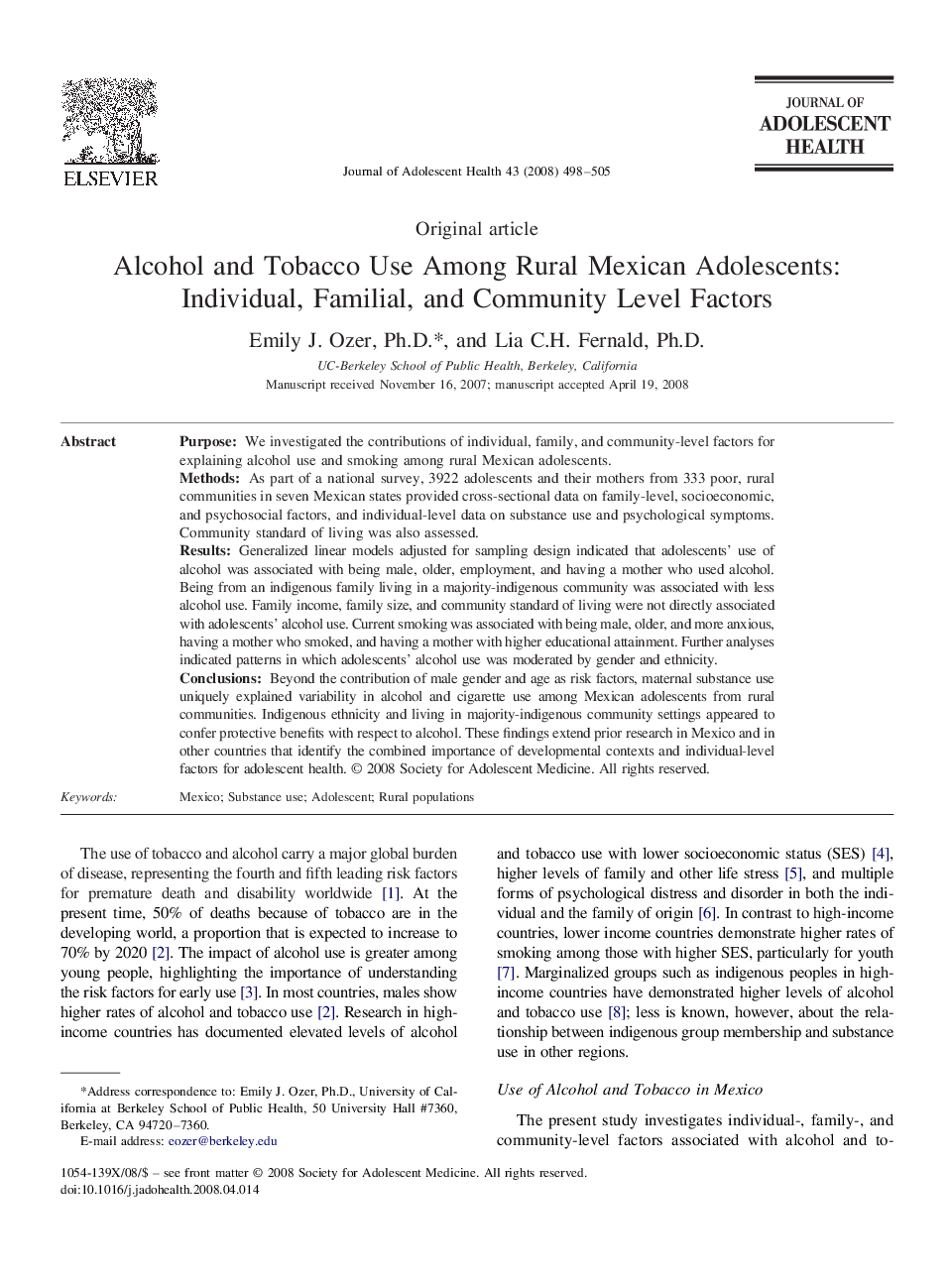| Article ID | Journal | Published Year | Pages | File Type |
|---|---|---|---|---|
| 1079724 | Journal of Adolescent Health | 2008 | 8 Pages |
PurposeWe investigated the contributions of individual, family, and community-level factors for explaining alcohol use and smoking among rural Mexican adolescents.MethodsAs part of a national survey, 3922 adolescents and their mothers from 333 poor, rural communities in seven Mexican states provided cross-sectional data on family-level, socioeconomic, and psychosocial factors, and individual-level data on substance use and psychological symptoms. Community standard of living was also assessed.ResultsGeneralized linear models adjusted for sampling design indicated that adolescents' use of alcohol was associated with being male, older, employment, and having a mother who used alcohol. Being from an indigenous family living in a majority-indigenous community was associated with less alcohol use. Family income, family size, and community standard of living were not directly associated with adolescents' alcohol use. Current smoking was associated with being male, older, and more anxious, having a mother who smoked, and having a mother with higher educational attainment. Further analyses indicated patterns in which adolescents' alcohol use was moderated by gender and ethnicity.ConclusionsBeyond the contribution of male gender and age as risk factors, maternal substance use uniquely explained variability in alcohol and cigarette use among Mexican adolescents from rural communities. Indigenous ethnicity and living in majority-indigenous community settings appeared to confer protective benefits with respect to alcohol. These findings extend prior research in Mexico and in other countries that identify the combined importance of developmental contexts and individual-level factors for adolescent health.
